Sunday 7th January 2018
We have an early start and are out at 6:30 am. Today is Christmas Day (Leddet) for the Ethiopian Orthodox church.
We are in Lalibela, the place to be for Ethiopian Orthodox Christians on Christmas Day, and also a world heritage site. If you know anything about Ethiopia besides famine and war, it is most likely Lalibela’s rock hewn churches. They were carved out of the volcanic rock in the 12th or 13th century. Legend states that King Lalibela wanted to build a new Jerusalem here. Many of the localities in Lalibela are named after sites in Jerusalem.
There are a large number of churches here in a rather compact area, and many of the details and paintings have been preserved. The churches appear to be free standing in large holes, unlike the rock hewn buildings in Petra.
We walk to Bet Maryam (St Mary’s Church) to catch part of the Christmas Service. People have been praying here since last night and the service here is broadcast to all of Ethiopia. What greets us is a site of biblical proportions. People are everywhere, on the hillside, in the trees, all clad in white and holding wax candles.
We get caught in the throng, heading through a small gate, and then spill onto the hillside. People have been sitting, sleeping, praying, eating and relieving themselves here since yesterday. The smell can be overpowering, but the atmosphere is electric.
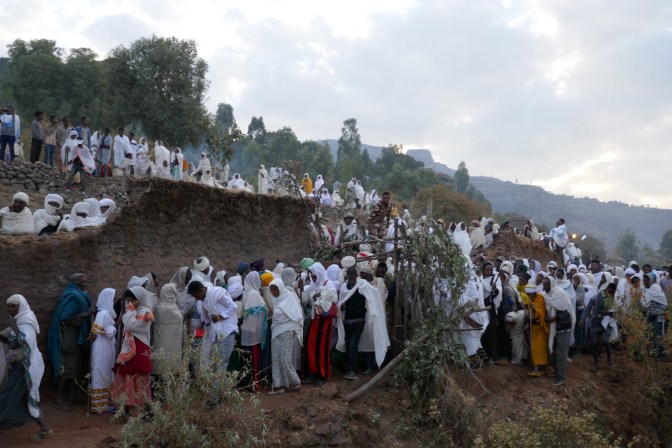
Women are shrilling loudly as we watch a procession of priests swaying and chanting. The priests are wearing white robes and turbans, the important ones wear colourful hats and embroidered umbrellas. The priests are shaking a sistrum each (a musical rattle from biblical times), while swaying and chanting to the sounds of slow drums and horns. It feels ancient and nearly pagan.
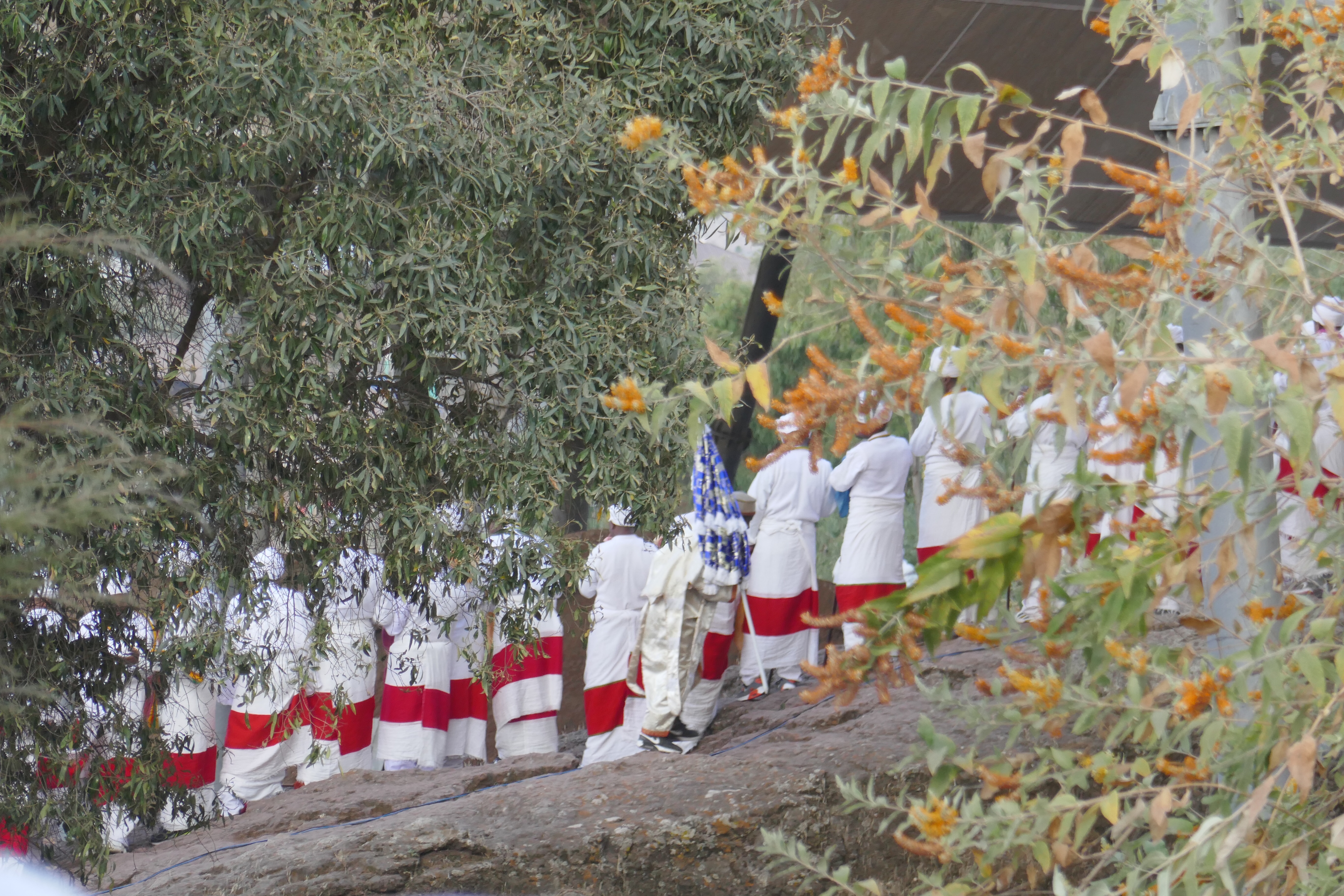
We do draw a bit of attention, and the focus of the worshippers surrounding us seems at times to be more on us than the priests. There are not many “white faces” in the crowd. The small number of tourists that make it here are sitting in a special section with a first row view of the proceedings.
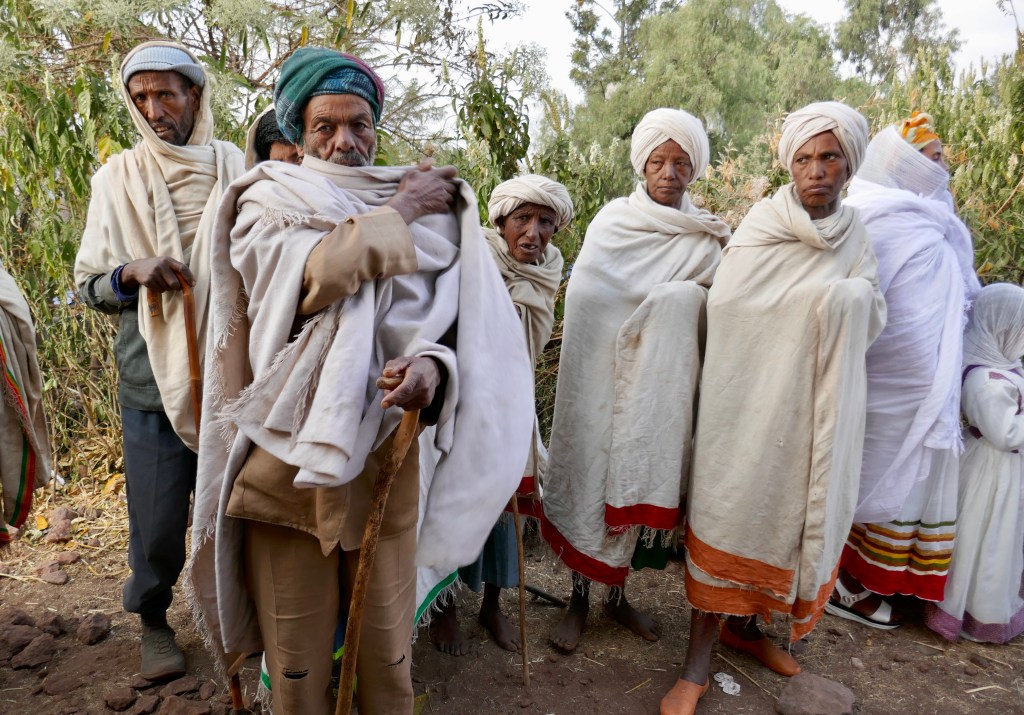
Food is provided by huge numbers of volunteers for the hungry pilgrims after the main service. For many, the long trip home starts after this meal.
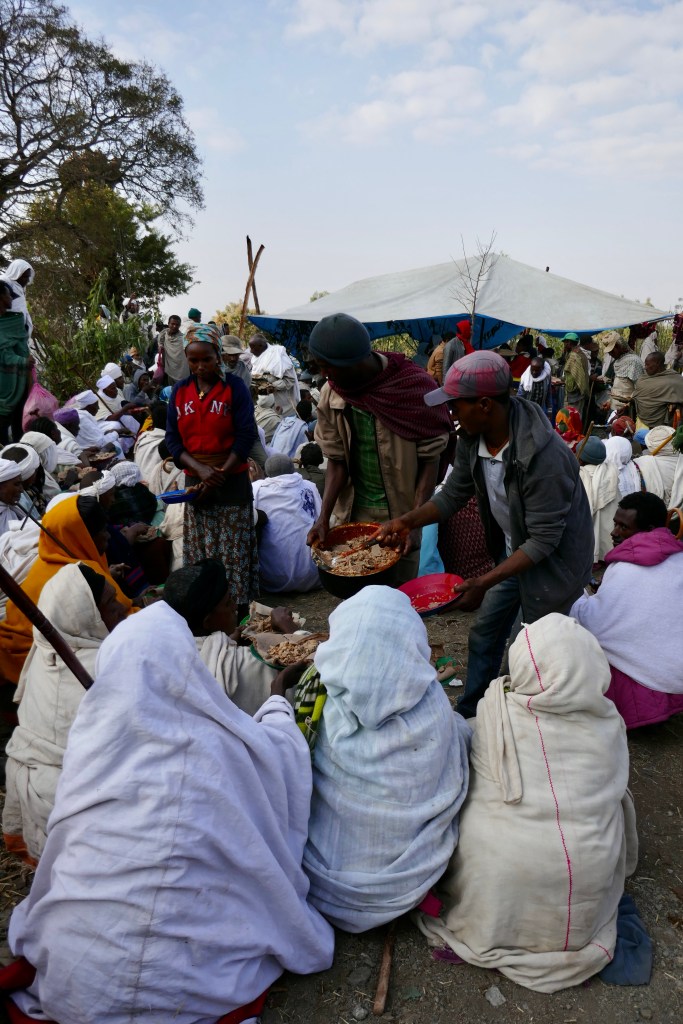
We have an excellent break of fast with goat meat from a small charcoal burner and some injera, and then spend the afternoon at the complex of churches. We visit Bet Methane Alem, the massive church that looks more like a greek temple and has a hideous Unesco provided roof on top.

Then it is up to Bet Maryam and Bet Mikael.
We queue up with the worshippers to descend the ramps to visit the churches. We have employed a “shoe caretaker”, somebody who looks after our shoes as we enter the churches barefoot, and brings them to us when we come back out.
One of my most memorable experiences is a group of teenage girls, all decked up in their white robes, giggling as they wait in the queue to enter one of the churches. We overheard them asking if they would die if Mike fell on top of them. And then they took a selfie of all of them together, still queuing up, with their smart phones.
Ethiopia is a land of contrasts; sanitation is extremely basic, water is not always available and electricity is one and off, but mobile reception is good just about everywhere!
Mike entered Bet Golgotha, which is said to contain the most secret place in the holy city, the tomb of King Lalibela. Only men are allowed in, and a visit is said to assure your place in heaven.
The Lalibela churches are generally square buildings. The central part is the sanctuary, a curtained off enclosure which can only be accessed by a dedicated priest. The sanctuary holds the tabot, a copy of the tablets with the ten commandments that were held in the Arc of the Covenant, as originally carried by Moses and the Israelites into Israel.
Most priests will be sitting in front of the curtains, holding horsetail fly squatters and viewing and attending to the worshippers. They provide prayers accompanied with incense and holy water. Men and women are generally kept seperate. There are few or no benches or seats, just carpeted floors. The walls are adorned with, at times garishly bright, frescoes depicting a range of biblical stories and St George.

There are still a lot of people out there, celebrating, singing and drumming, moving from church to church. Most have been up all night and they are still going strong!
The most famous of the churches is Bet Giyorgis (St George). We get down into it by descending a ramp that can be seen behind the pilgrims and before the trees in the picture below. This ramp is very narrow and has to accomodate up and down going people.

Once down in the 15 metre deep courtyard the party is still in full swing with pilgrims singing and dancing. Very uplifting and atmospheric!
There is a small pool with holy water, and in the various niches around the courtyard wall are the mummified corpses of priests.

We head back to the hotel and watch the sunset from the deck of the hotel as eagles ride the currents below us.
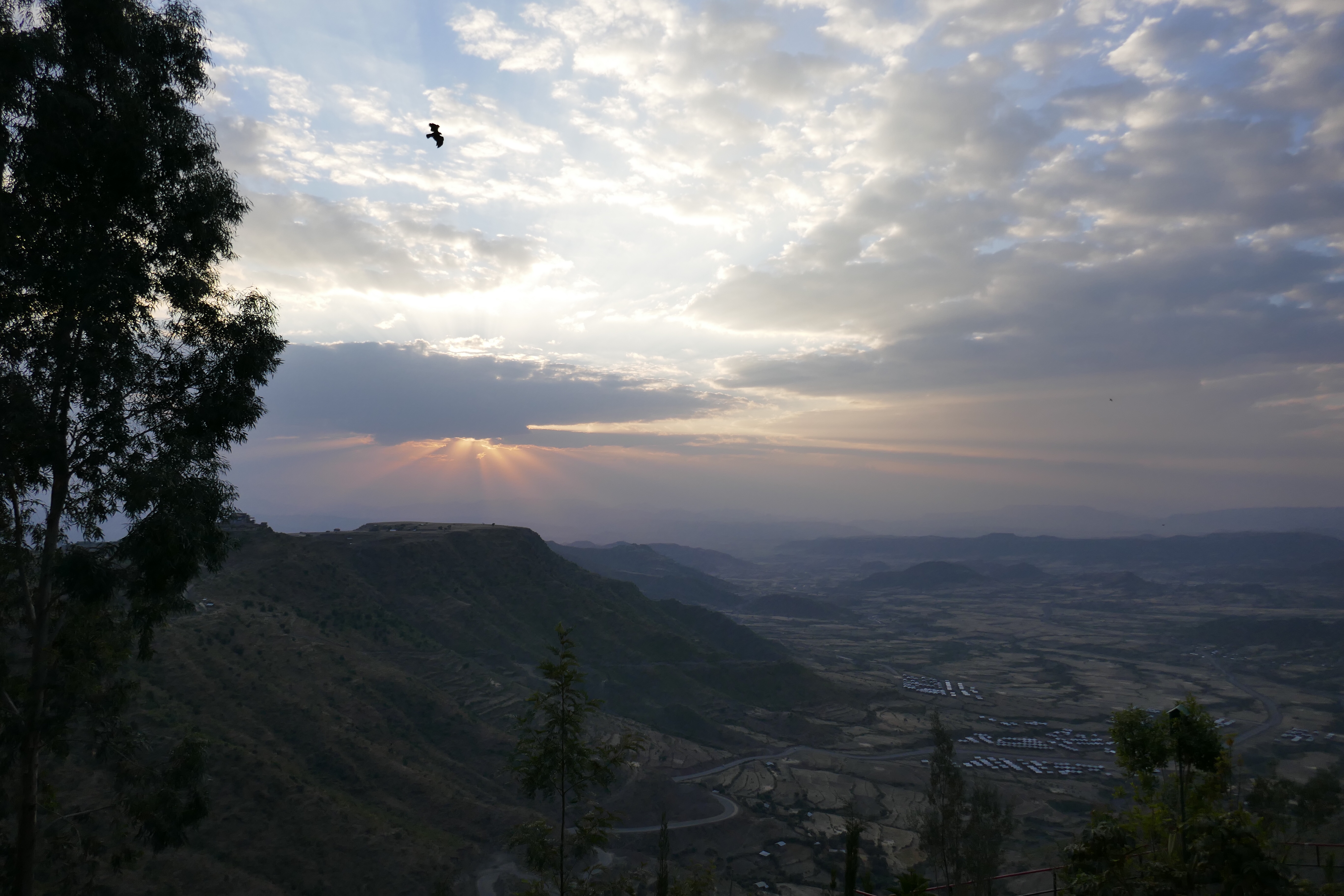
And then we close of the day with a lovely Christmas dinner of chicken curry, fish and chips, and beef stroganoff, and two bottles of Rift Valley wine. Those are the only Ethiopian wines that are drinkable without having to mix them with Coke Cola!
Travel Details and Tips:
Accomodation: Panoramic View Hotel, Lalibela
Tip 1: Be part of it! Life is a journey! There is a special area for foreign visitors to observe the festivities. You probably get much better photos of the offical proceedings from there, but that is no replacement for the feeling of actually being in the middle of the crowd with the people!
Tip 2: Hire a guide and employ a “shoe caretaker”. It is the best way to have a relative care free experience visiting the churches of Lalibela. As an indicator, we paid US$50 per person for two days for our guide during high season. We booked him in advance, and let him pick the shoe care taker, who cost 100 Birr per person for two days. Well worth it!

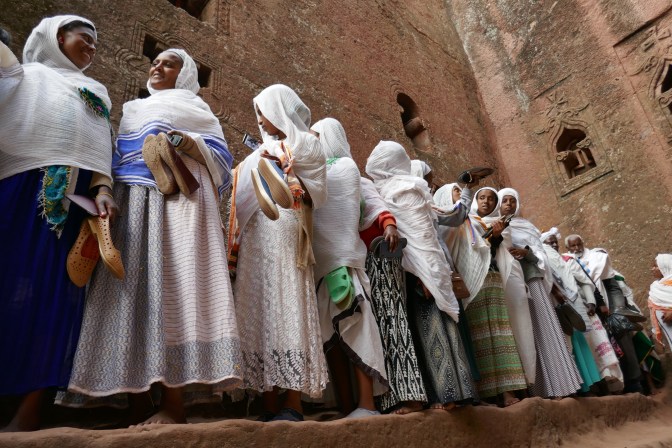
Have been reverted by your journey so far. I would guess very few westerners have experienced the many adventures you have had there, particularly the Xmas ceremonies which sound amazing. You both are very intrepid people who dare to do what others would not & as a result have had many unique experiences.
LikeLiked by 2 people
It was truly amazing, it did take us ten years to finally take up the invite from our friends to visit. Can’t wait to go there again though (once Covid and the civil war are over)!
LikeLiked by 1 person